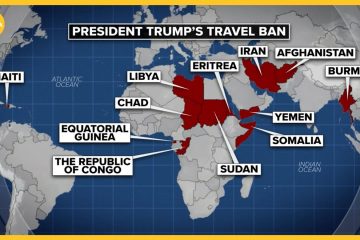Understanding the Trump Travel Ban: Current Developments

Introduction to the Trump Travel Ban
The Trump travel ban, initially implemented in 2017, aimed to restrict the entry of individuals from certain countries into the United States. The importance of this policy lies in its profound impact on immigration, national security, and international relations, making it a focal point of discussion in American politics.
Background and Implementation
The original travel ban, officially known as Executive Order 13769, targeted citizens from seven predominantly Muslim countries: Iran, Iraq, Libya, Somalia, Sudan, Syria, and Yemen. Its intent was stated as a measure to prevent terrorism. The order faced immediate legal challenges, with numerous federal judges temporarily blocking its enforcement. The controversy over the ban increased debates over religious discrimination, civil liberties, and the role of the executive branch in immigration policies.
Recent Developments
As of October 2023, the Supreme Court has dealt with various cases regarding the travel ban and its restrictions. Although the original version has undergone multiple revisions, the key components remain contentious. In recent months, federal courts have again examined challenges to the ban, focusing on its implications for national security and civil rights. Several advocacy groups continue to argue that the travel ban unjustly discriminates against specific nationalities and religions.
Current Implications and Future Outlook
The implications of the Trump travel ban on U.S. immigration policy persist. With the upcoming elections in 2024, there’s speculation about how potential presidential candidates may approach the travel ban if they gain office. Should a Republican candidate aligned with Trump’s views win, the ban may see reinforcement. Conversely, a Democratic candidate may push for its complete repeal or stringent amendments to ensure fair immigration practices.
Conclusion
The Trump travel ban remains a defining issue in the landscape of U.S. immigration policy. Its legacy not only influences current national security discussions but also shapes the relationship between the U.S. and several nations. As the political climate evolves, so too will the debates surrounding immigration. Readers should continue to stay informed about these developments, as they will undoubtedly affect various aspects of American society and global interactions.









